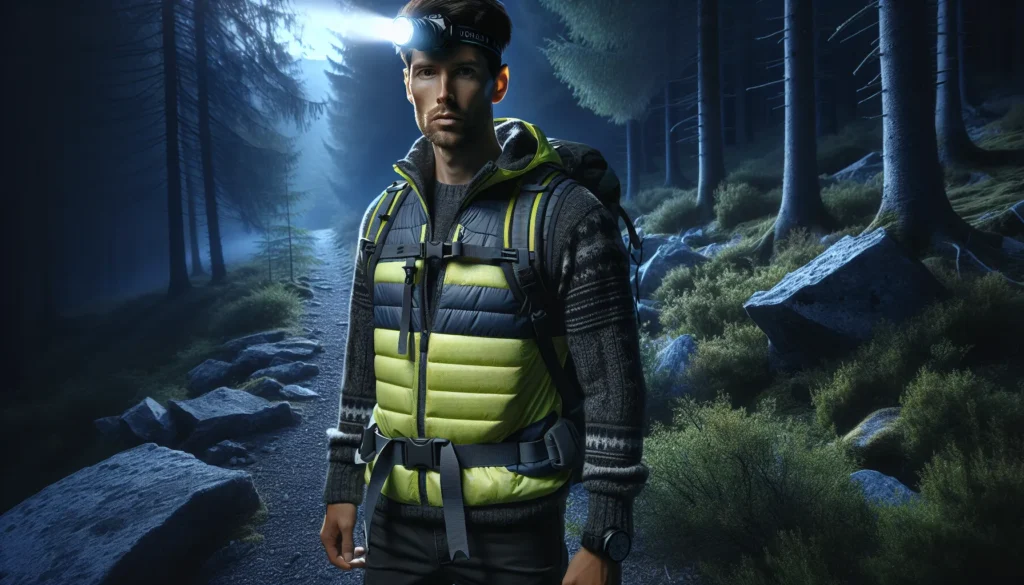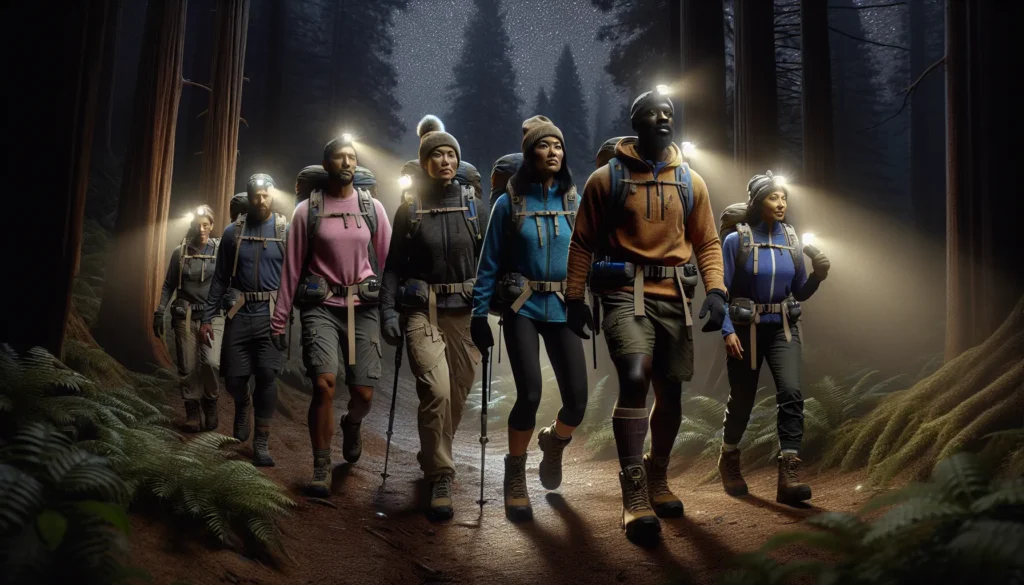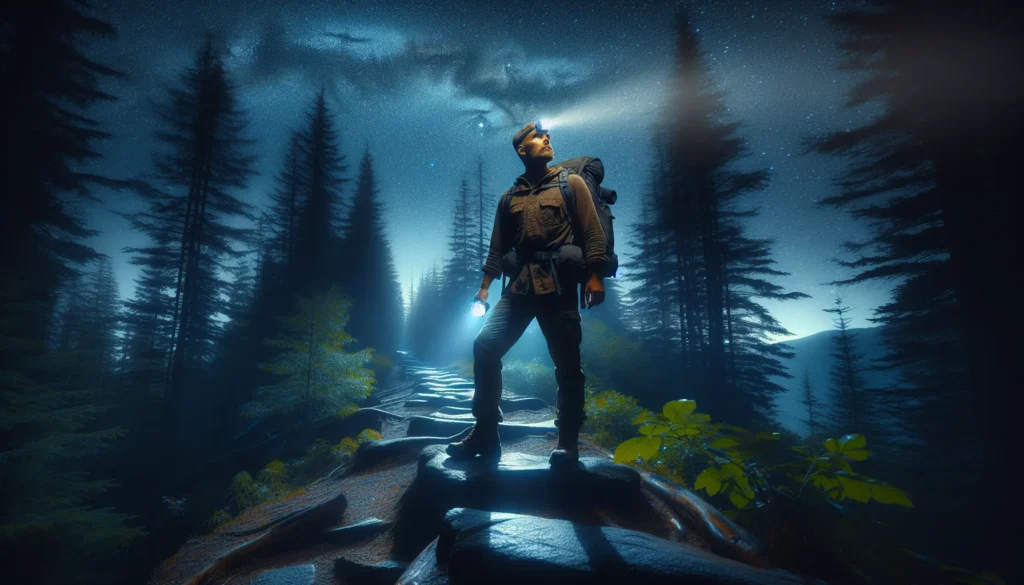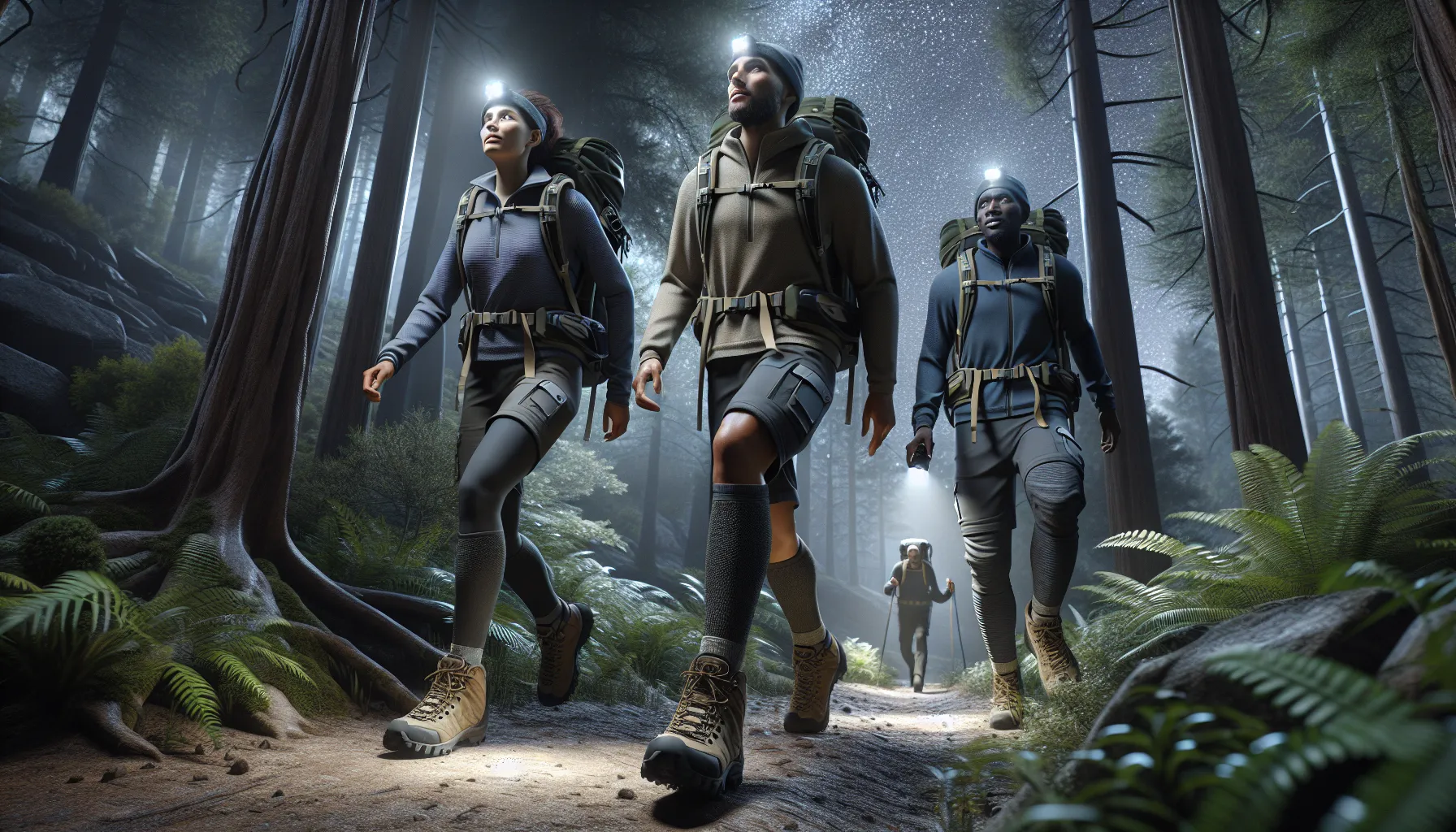Key Takeaways
- Night hiking offers unique benefits, including stargazing, cooler temperatures, and opportunities to experience nocturnal wildlife.
- Essential gear includes a reliable headlamp or flashlight, layered clothing, navigation tools, and reflective items for safety.
- Planning ahead is crucial—choose familiar trails, research the route, and set a turnaround time to avoid prolonged exposure to darkness.
- Hiking with a group enhances safety, while staying alert and aware of your surroundings minimizes risks.
- Enhance your experience by embracing the nocturnal environment, adjusting to low light, and taking time to enjoy stargazing and wildlife.
- Avoid common mistakes like overpacking, underpacking, or ignoring weather conditions, which can diminish the safety and enjoyment of night hiking.
There’s something magical about hiking under the stars. The world feels quieter, the air cooler, and the trails take on an entirely new personality. But night hiking isn’t just about grabbing a flashlight and heading out—it takes a bit of preparation to make it both safe and enjoyable.
I’ve learned that a little planning goes a long way when exploring after dark. From choosing the right gear to understanding how to navigate in low light, there are some simple tips that can make a huge difference. Whether you’re a seasoned hiker or trying it for the first time, night hiking can be an unforgettable adventure with the right approach.
Benefits Of Night Hiking
Night hiking offers a serene and unique outdoor experience. Trails feel quieter, with fewer hikers and reduced noise, creating a peaceful environment. I often find it easier to connect with nature without distractions.
Stargazing is a major highlight. Clear skies and minimal light pollution on remote trails enhance the visibility of stars, constellations, and even shooting stars.
Cooler temperatures are an advantage. Compared to daytime hikes, night hikes are more comfortable in areas with warm climates.
Wildlife encounters differ at night. Nocturnal animals like owls, bats, and foxes become more active, giving a glimpse into the nighttime ecosystem.
Heightened senses make the experience immersive. Limited visibility shifts focus to sounds, smells, and textures, making the hike more engaging.
Essential Gear For Night Hiking

Carrying the right gear is crucial for a successful night hike. Each item enhances safety, comfort, and the overall experience.
Headlamps And Flashlights
Choosing bright, reliable lights ensures visibility on dark trails. I always bring a headlamp for hands-free navigation and a flashlight as a backup. Look for models with at least 200 lumens and adjustable brightness settings. Extra batteries are essential to avoid being left in the dark.
Proper Clothing
Wearing layered, moisture-wicking clothing helps regulate body temperature during night hikes. I stick to breathable fabrics for base layers, an insulating middle layer like fleece, and a windproof outer shell. Adding a reflective vest or strips improves visibility for others on the trail. Sturdy, waterproof hiking boots provide better footing in uneven terrain.
Navigation Tools
Reliable tools prevent getting lost after dark. I carry a detailed map and a compass to complement GPS devices or trail apps in case of signal loss. Preloading routes on a smartphone app provides additional guidance. Reflective trail markers or glow sticks placed at intervals can also help mark your path if returning the same way.
Safety Tips For Night Hiking

Night hiking can be a rewarding experience when safety is a top priority. Being prepared helps reduce risks, ensuring an enjoyable adventure.
Planning Your Route
I always choose familiar trails or research the route thoroughly before going. Knowing key landmarks and trail difficulties ensures smoother navigation. I check online reviews and trail maps for updates on hazards like steep drops or fallen trees. Setting a turnaround time is essential to avoid extended exposure to darkness.
Hiking With A Group
Hiking with others increases safety, as group members share responsibilities and assist in emergencies. I keep the group size manageable, usually 3-6 people, to stay organized without overcrowding the trail. Assigning roles, such as navigation leader or pace-setter, keeps everyone aligned. Staying together is critical, with regular headcounts at trail junctions.
Staying Aware Of Surroundings
Maintaining awareness is crucial when hiking at night. I rely on headlamps to scan ahead and check for uneven terrain, wildlife, or loose vegetation. Listening for unfamiliar sounds helps me detect potential hazards like approaching animals or others on the trail. Staying alert prevents missteps and keeps interactions with the environment smooth.
Tips For Enhancing Your Night Hiking Experience

Exploring trails in the dark requires a combination of adaptation and appreciation. By focusing on your surroundings and making thoughtful adjustments, you can transform a simple hike into a memorable adventure.
Adapting To Low Light Conditions
I rely heavily on proper lighting to navigate safely. A headlamp with at least 200 lumens allows me to keep my hands free while ensuring the trail is well-lit. I also bring a flashlight as a backup and pack spare batteries to avoid being caught in total darkness.
Adjusting my eyes to the dark takes time. I limit my use of bright light when unnecessary to preserve natural night vision. Red-light settings on headlamps help reduce glare and prevent disorientation. I always scan the trail ahead and watch for obstacles like tree roots or rocky terrain.
Reflective trail markers provide extra guidance on unclear paths. I place small glow sticks or reflective tape at confusing intersections to mark my route when exploring less familiar areas.
Embracing The Nocturnal Environment
I find night hiking peaceful and enriching. I take moments to pause, letting the quietness sharpen my senses. I listen for the soft rustles of nocturnal animals or the wind through the trees, and I feel the trail’s textures underfoot to stay grounded.
Stargazing enriches my experience further. On clear nights, I look up to identify constellations or use a stargazing app for guidance. I avoid bright lights during these moments to keep my view of the night sky clear and unspoiled.
Spotting nocturnal wildlife, like bats, foxes, or owls, adds an element of discovery to any hike. I approach animals with respect, ensuring I maintain distance to avoid startling them. Observing them in their natural habitat reminds me of the unique charm night hiking offers.
Common Mistakes To Avoid During Night Hikes
Night hiking offers an unforgettable experience, but certain mistakes can diminish its safety and charm. Avoiding these common errors ensures a better adventure.
Overpacking Or Underpacking
Packing either too much or too little can create unnecessary challenges. Carrying excess gear makes navigating trails harder, while not having essentials leaves you unprepared. I bring only the necessities, like a reliable headlamp, extra batteries, water, snacks, a first-aid kit, and weather-appropriate clothing. For example, I always avoid bringing bulky or redundant items like extra pairs of boots or excessive cooking supplies, as they only add weight without contributing to the hike.
Ignoring Weather Conditions
Overlooking the forecast can lead to uncomfortable or dangerous scenarios. Weather changes quickly at night, and being unprepared increases the risks of hypothermia or heat exhaustion. Before heading out, I check for rain, wind, or extreme temperature shifts using a trusted weather app. If cool temperatures are likely, I wear moisture-wicking base layers and pack an insulating jacket. When conditions are uncertain, postponing the hike ensures a safer, more enjoyable experience in the future.
Conclusion
Night hiking offers a magical blend of adventure and tranquility that’s hard to find during the day. With the right preparation and mindset, it becomes an unforgettable way to connect with nature in a whole new light—or lack of it!
Whether it’s the thrill of spotting nocturnal wildlife or the quiet joy of stargazing, there’s something truly special about exploring trails after dark. So grab your gear, plan ahead, and step into the night. You might just discover your new favorite way to hike!
Frequently Asked Questions
What is night hiking, and why should I try it?
Night hiking involves exploring trails after sunset, offering a serene and peaceful experience. It allows you to enjoy cooler temperatures, stargazing, and a heightened sense of nature as nocturnal wildlife becomes active. With proper preparation, it’s a unique way to connect with the outdoors.
What gear do I need for a night hike?
Essential gear includes a reliable headlamp or flashlight (minimum 200 lumens), extra batteries, layered moisture-wicking clothing, sturdy waterproof boots, a map, compass, and snacks. Reflective trail markers or glow sticks are also helpful for navigation.
How do I stay safe while hiking at night?
Plan routes carefully by selecting familiar trails or researching in advance, set a turnaround time, and hike with a group when possible. Use proper lighting to monitor your surroundings, and always carry essential items like a first-aid kit and weather-appropriate clothing.
Why is stargazing a highlight of night hiking?
With minimal light pollution, night hikes provide excellent opportunities to view celestial bodies. Clear skies enhance visibility, and using stargazing apps can help identify constellations, planets, and more.
How can I adapt to low-light conditions during night hikes?
Use a headlamp with adjustable brightness to avoid impairing night vision. Limit bright light to help your eyes adapt, and rely on reflective markers or glow sticks to guide your path. Pause occasionally to let your eyes adjust further.
What are the benefits of hiking at night compared to daytime?
Night hikes offer cooler temperatures, a quieter environment, and a chance to experience nature differently. Encountering nocturnal animals like foxes or owls and enjoying a starry night elevates the adventure.
Can beginners participate in night hiking?
Yes, beginners can enjoy night hiking with proper planning. Start with short, familiar trails, pack essential safety gear, and go with an experienced group for guidance. Preparation ensures a smooth and enjoyable experience for all levels.
What mistakes should I avoid while night hiking?
Avoid overpacking or underpacking; bring only essentials like lights, water, and weather-appropriate clothing. Don’t overlook the weather forecast, and postpone hikes if conditions seem unsafe. Always stay alert to navigate and avoid hazards effectively.
Is hiking alone at night safe?
Hiking alone at night is riskier. It’s safer to hike with a group to reduce the chance of getting lost or encountering issues. If you must hike alone, choose familiar trails, inform someone of your route, and carry safety tools like a whistle and fully-charged phone.
How can I make night hiking more enjoyable?
Pause to appreciate the serene atmosphere, listen to sounds, and explore the textures of nature. Stargaze using apps and avoid bright lights to deepen the experience. Observing active nocturnal wildlife adds to the excitement and uniqueness of the hike.

